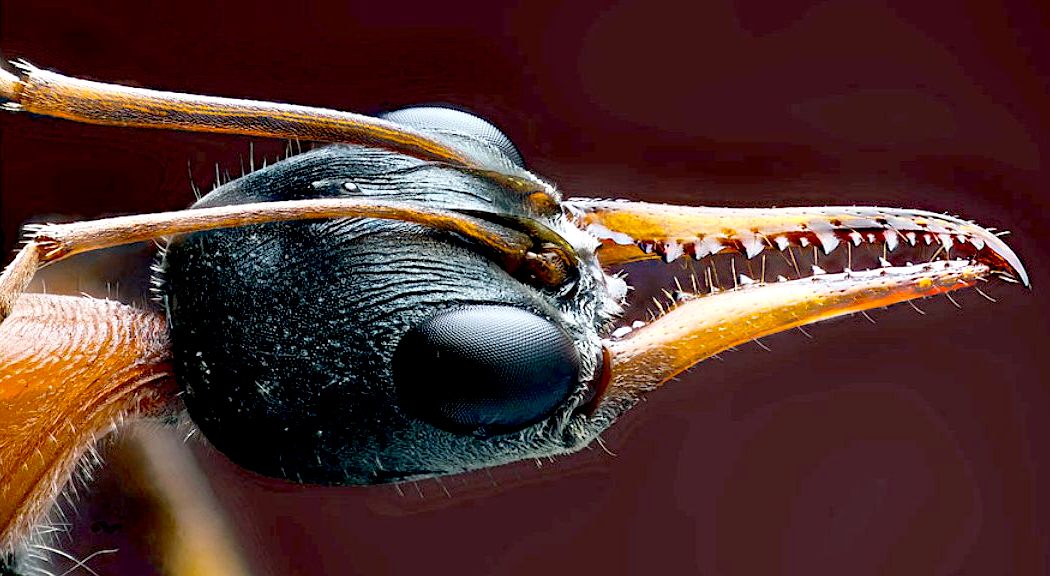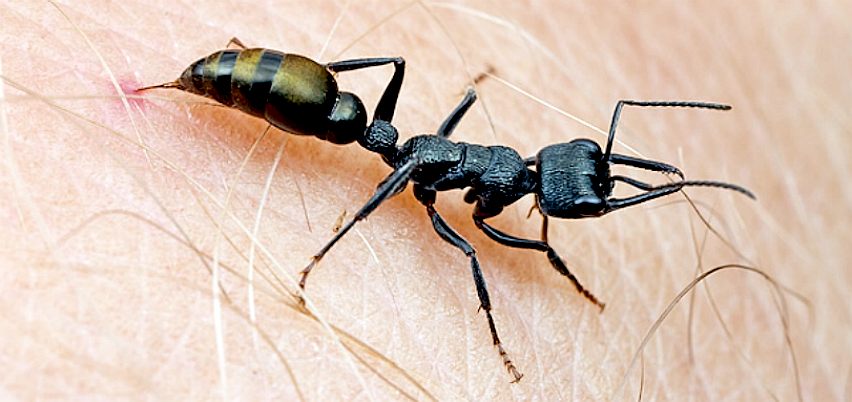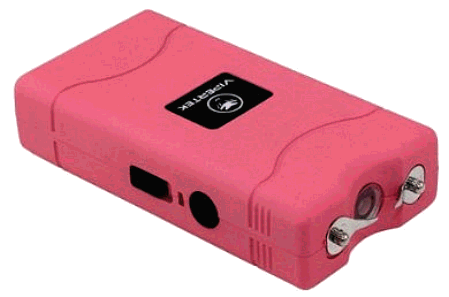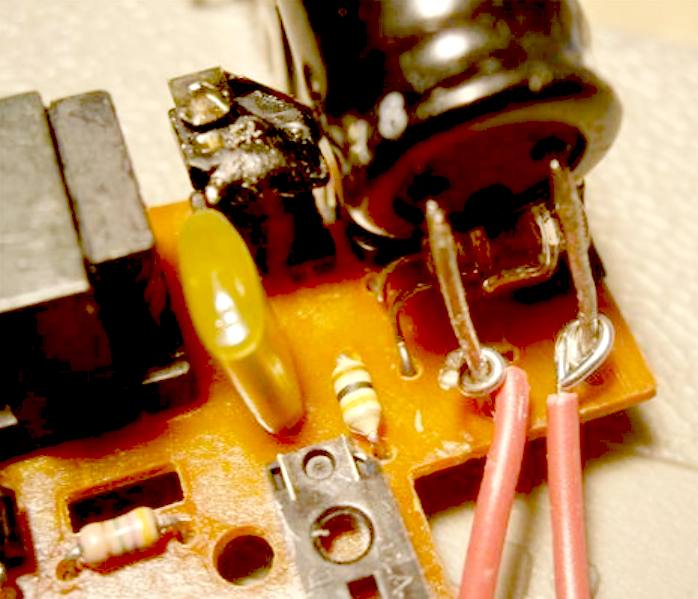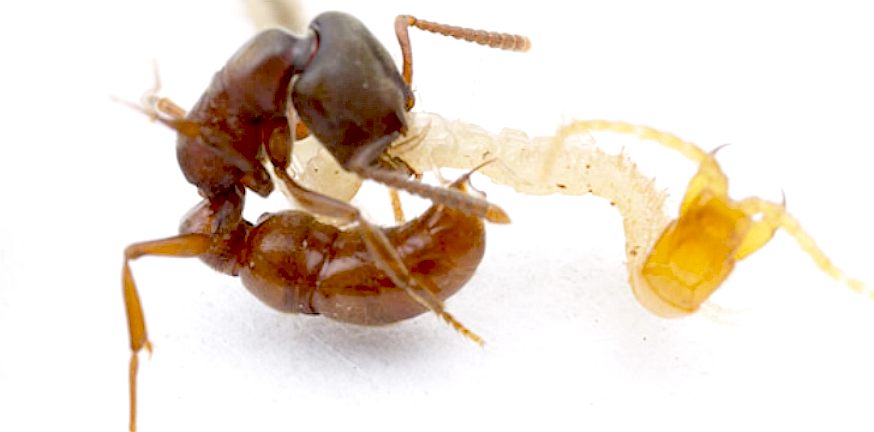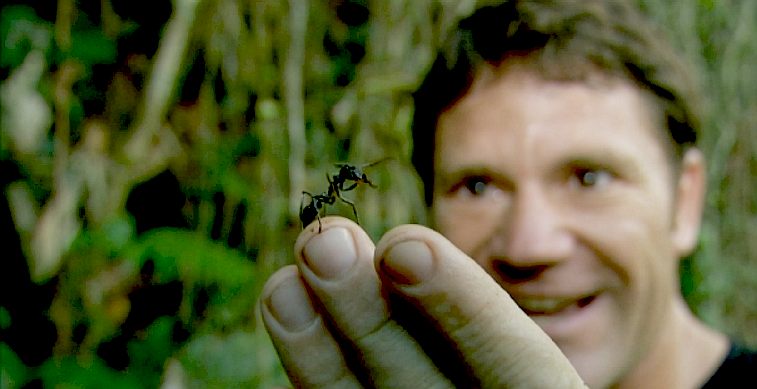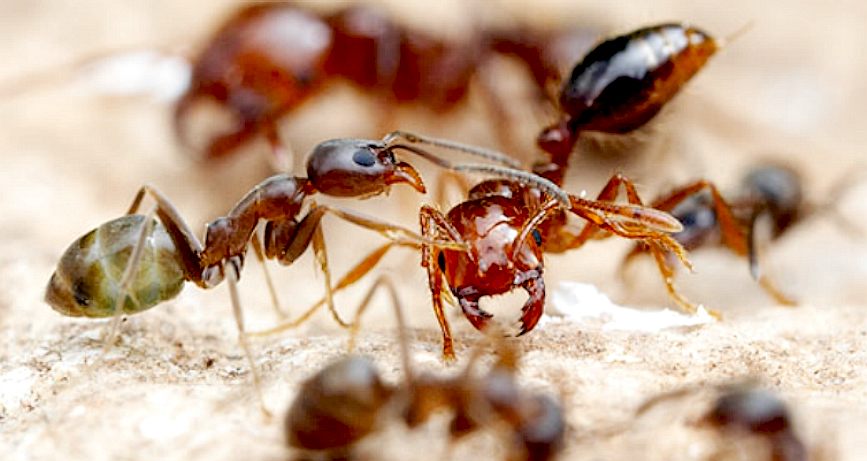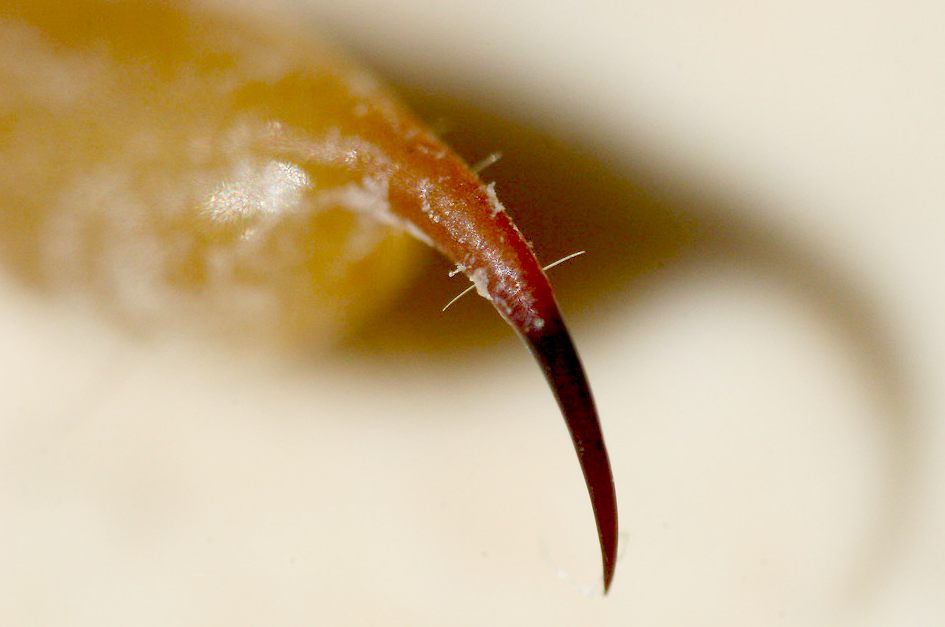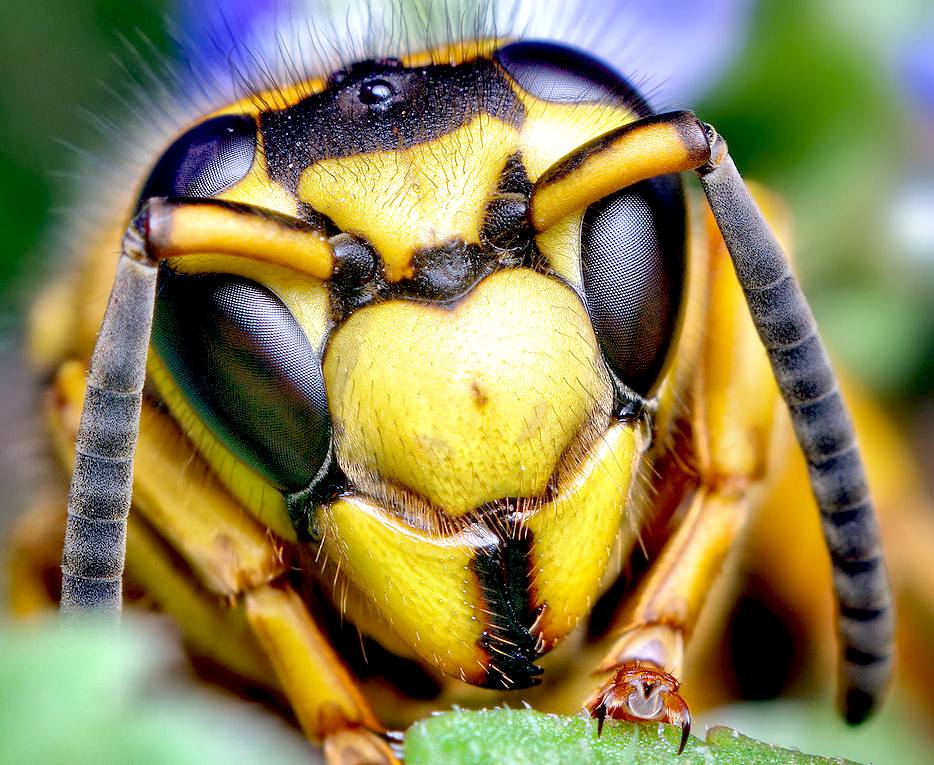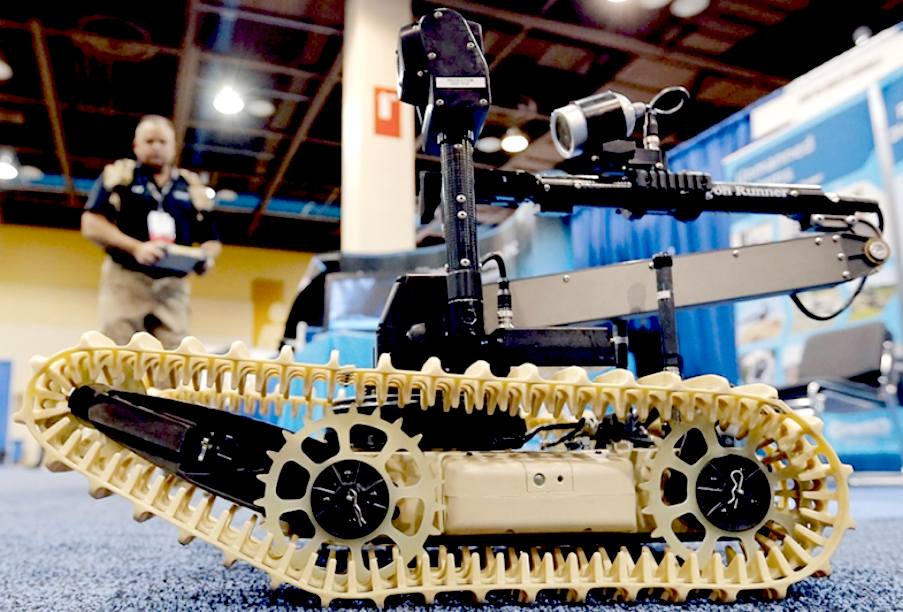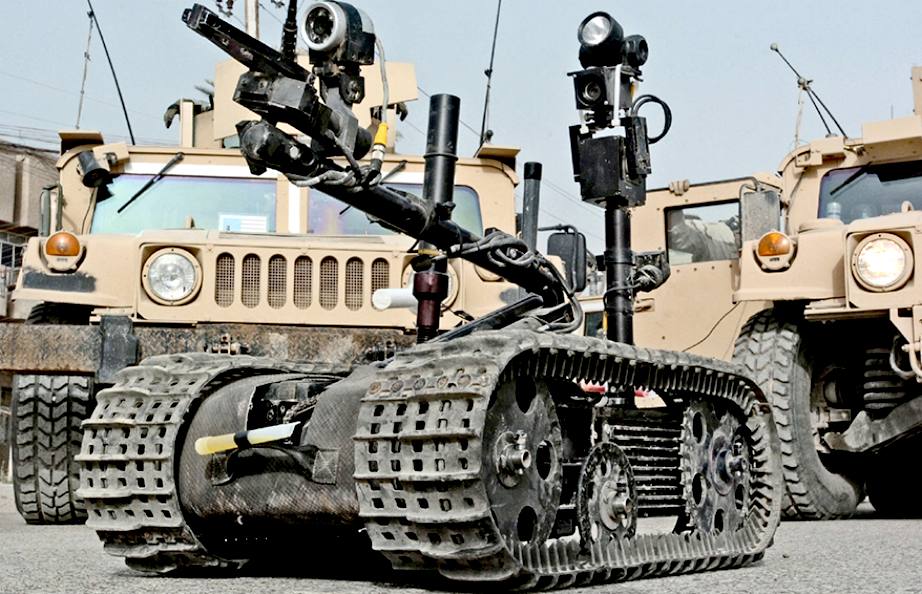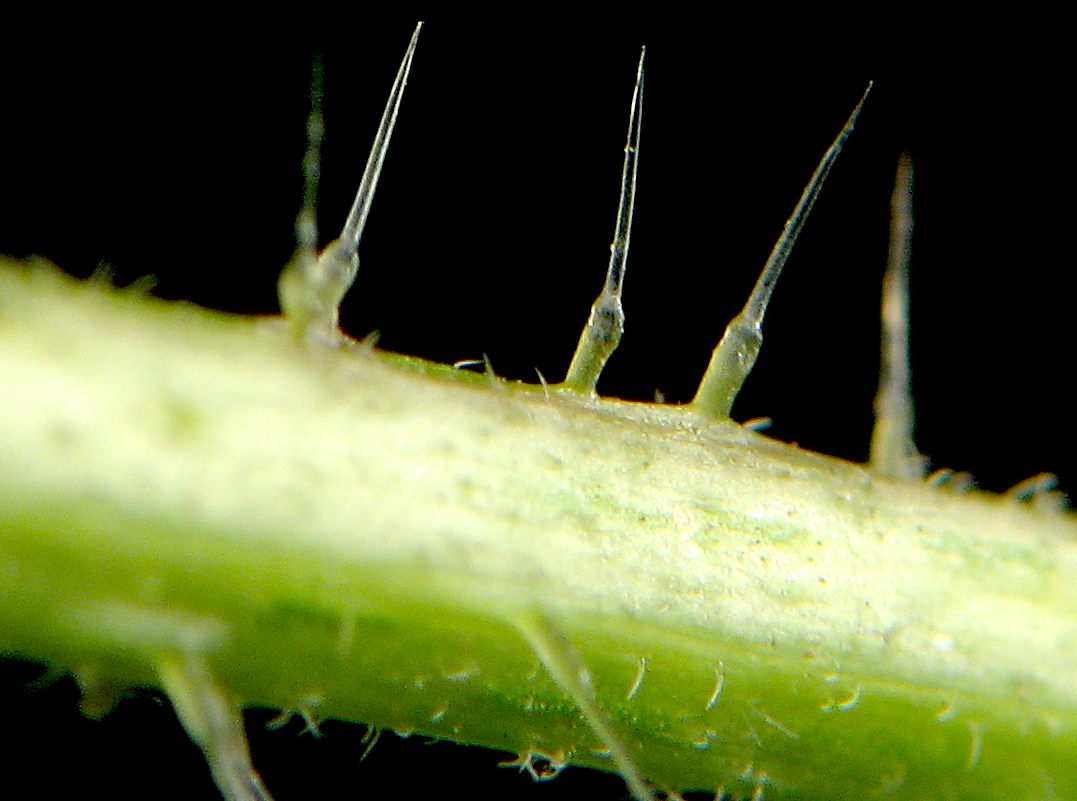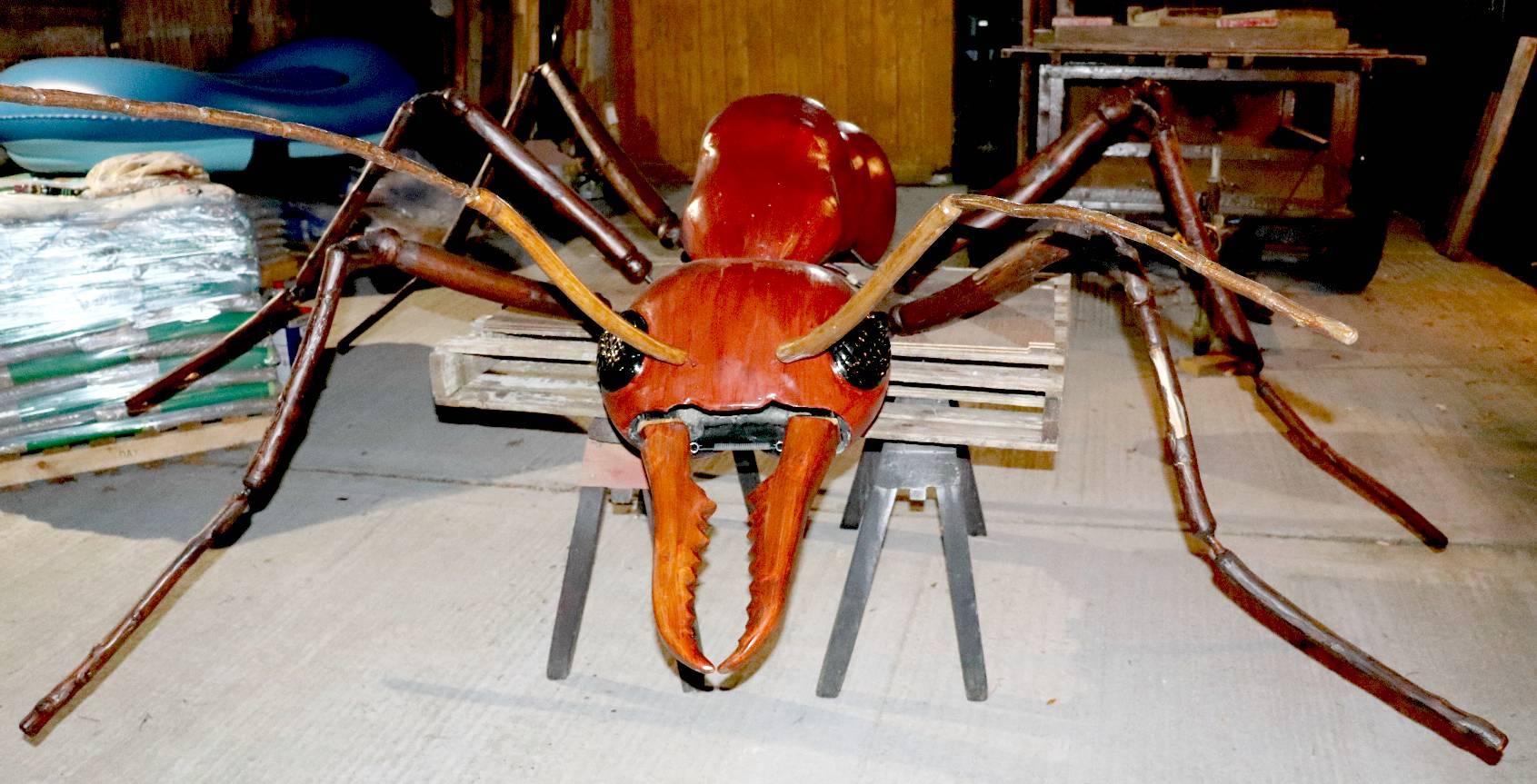|
GIANT ANT - WEAPONS: STING, LASERS & PAINTBALL
|
|||||||
|
FABULOUS - If looks could kill, this is the look. Never mind the London look, this female is dressed to kill and armed with a sting that beats a divorce hands down. Dino the DinoBot is preparing to dress for the ball - paintball.
Most insects have some kind of self defence mechanism that is unpleasant to either their pursuers or their quarry. Ants are no exception, the bullet and jumper ants have one of the most potent stings imaginable. The bullet ant is said to be the most painful to humans. Many plants also have stings or barbs as a self defence mechanism. The evolution of the sting or bite as a hunting tool is interesting. Snakes bite with hollow fangs and inject venom. Ants use stings in combat to kill an adversary and when hunting for food, to paralyze whatever is on the menu.
OUCH - A black bulldog ant stings a human. You can see the venom making the skin red. It is no joke being stung by one of these insects, it can paralyze a man - apart from the excruciating pain.
In this article we look at (solid state) electronics as a means to simulate the sting of an ant, without going over to chemicals, needles and pumps - although that may also be an interesting topic at some point. Chemicals play an important part in all biological organisms, even humans, where the orgasm is natures reward for attempting to procreate, and a nice taste (a chemical reaction) is the reward for feeding the body.
We also take a glimpse at the booming sport of paintball marking. Using slightly modified gaming markers, we can target and mark an opponent. Apart from a high level of fun, this development might be useful in real life control situations, but not here and not today. This is just for sporting fun.
WARNING - Before building your own laser, please read up on how dangerous they can be. You can be blinded if you do not work safely. Never look into a laser beam. Do not shine a laser at any moving vehicle. Do not use a laser to play with pets. This information is posted here as an educational resource. If under 18, make sure your parents know what you are attempting.
DIY PCBs - An example of a laser driver circuit diagram without a potentiometer and a 4 ohm resistor. Lasers are now used as weapons on US Navy warships as part of their strategic development.
LASERS - The power of commercially available lasers is coming down in line with the popularity of cutting applications such as engraving. It won't be long before this 5.5 watt unit is available in 500 watts and then 5,000 watts power outputs. Experiments are planned using these and other units as to their potential for anti-piracy use on boats that are unmanned. It is better to have a weapon and not need it, than need a weapon and not have it.
TASERS - The X26 the model commonly used by police departments delivers a peak voltage of 1200 V to the body. They use barbs to establish a circuit, fired from the gun by compressed gas. The gun generates a series of 100-microsecond pulses at a rate of 19 per second. Each pulse carries 100 microcoulombs of charge, so the average current is 1.9 milliamperes, too force the muscles to contract without risking electrocution - so they say! Stun guns generate a high-voltage, low-amperage electrical charge. You may remember an experiment like this in school where you joined hands to complete a circuit.
A
20,000 - 150,000 volt charge combines with the electrical signals from a human brain to confuse it. At its most basic, this is all there is to incapacitating a person with a stun gun - you apply electricity to a person's muscles and
nerves, and since there are muscles and nerves all over the body, it usually has some effect.
The Taser is not considered to be a firearm in 44 US states where they can be carried lawfully. The Czech Republic encourages vulnerable persons to carry such devices for self protection. You can make your own stun device from a gas lighter or a camera flash - but these experiments are much more dangerous than the commercial product that you cannot purchase in many countries.
WASP STINGER - This is the sting of a wasp, with a venom droplet visible. The stingers of some wasps, such as those of the Polistes versicolor, contain relatively large amounts of 5-hydroxytryptamine (5-HT) in its venoms. The 5-HT in these venoms has been found to play at least two roles: one as a pain-producing agent and the other in the distribution and penetration of the paralyzing components to vulnerable sites in the offender. This helps in the rapid immobilization of the animal or of the certain body parts of the animal receiving the venom.
PAINTBALL - is a sport in which players compete, in teams or individually, to eliminate opponents by tagging them with capsules containing water-soluble dye and featuring a gelatin outer shell (referred to as paintballs) propelled from a device called a paintball marker (commonly referred to as a paintball gun). Paintballs are composed of a non-toxic, biodegradable, water-soluble polymer. The game is regularly played at a sporting level with organized competition involving major tournaments, professional teams, and players.
WARNING - Before experimenting with your own stun equipment, check out the law applicable to your area - it varies widely. There are many personal stun weapons available off the shelf on Amazon and Ebay. They cost around $20 dollars on average. We include this subject for general interest only. No way should you even consider making any kind of robot with stun features included - except perhaps as an insect repellent : )
CHEMICAL WARFARE - You don't have to sting to ward off an enemy, here an ant is waving a droplet of venom in the air as a threat of things to come. Ants also smear venom onto an enemy.
ANT STINGS
If we map the stinger to an ant phylogeny (simplified from Brady et al 2006 using the program Mesquite 2.5) we see that all the early lineages have one. Of course, this is a sensible observation given that ants evolved from
wasps. The Ur-Ant possessed a wasp like sting and the device is carried through to many extant species.
Stephen James "Steve" Backshall (born 21 April 1973) is a
BAFTA-winning English naturalist, writer and television presenter, best known for BBC TV's Deadly 60. His other BBC work includes being part of the expedition teams in Lost Land of the Tiger, Lost Land of the Volcano and Lost Land of the Jaguar, and he has worked for the National Geographic Channel and the Discovery Channel. He has published three novels for children and several non-fiction works.
The early-diverging ant lineages are nearly all predators. Most forage alone without the help of nest-mates, and their prey is not killed but paralyzed. The prey remains alive until consumed, so does not decompose a neat touch where refrigeration is human only territory. The catching and maintaining live prey is not unlike the strategy of predatory wasps that capture spiders or caterpillars for their young. Only ants are social and carry their quarry back to communal nests.
In general, then, what seems to favor a sting is either the need for foraging ants to paralyze prey - the ancestral state for the ants - or the need to defend against vertebrate enemies. Ants that do not require live prey, or ants whose lives involve a lot of fighting against other ants, have often arrived at more effective tools.
DRACULA - One example of a stinging species is the western dracula ant, Amblyopone oregonensis. This insect feeds on geophilomorph centipedes in the old growth forests of western North America. Their stinger is well-developed and is used primarily to inject a blend of paralyzing enzymes into the centipedes. The hapless myriapod is then fed to the voracious ant larvae.
EVOLUTION
Many modern ants have since moved away from this ancestral habit of solitary hunting. The more diverse lineages retrieve prey in groups and get much of their sustenance from hemipteran honeydew or scavenged detritus. It is in these lineages that the sting often is lost or reduced. Where present, the function usually switches from prey capture to
defense, as in the wood ant that squirts formic acid to protect their
nests.
A
stinger is not always so useful against ant competitors. In combat with other ants, fire ants may sting. But just as often they resort to waving volatiles about, or smearing venom, instead of trying to pierce the chitinous armor of their enemies.
BULLET ANT - The pain caused by this insect's sting is purported to be greater than that of any other hymenopteran and is ranked as the most painful according to the Schmidt sting pain index, given a "4+" rating, above the tarantula hawk wasp and, according to some victims, equal to being shot, hence the name of the insect. It is described as causing: waves of burning, throbbing, all-consuming pain that continues unabated for up to 24 hours.
CANNIBALS - In one Forelius versus fire ant battle, the opposing sides maintained a standstill for the entire morning they were observed. The Forelius never penetrated deep enough into the fire ant nest to plunder any significant amounts of brood, but the fire ants also failed to repel their attackers. Although the long term evolutionary trend might seem to favor the airborne chemical warfare of Forelius, for 4 hours both weapons systems remained locked in an equilibrium. What an equivalent battle might look like in another 50 million years is anyone’s guess.
ANT VENOM
Ant venom is any of, or a mixture of, irritants and toxins inflicted by ants. Most ants spray or inject a
venom. In the case of the subfamily Formicinae the main constituent of the
spray is formic acid.
SCORPION - Among arthropods, a sting is a sharp organ, often connected with a venom gland, adapted to inflict a wound by piercing, as with the caudal sting of a scorpion, seen above.
WASPS
- Yellow jacket or yellowjacket is the common name in North America for predatory wasps of the genera Vespula and Dolichovespula. Members of these genera are known simply as "wasps" in other English-speaking countries. Most of these are black and yellow like the Eastern yellowjacket Vespula maculifrons and the Saxon wasp Dolichovespula saxonica.
Curious,
the chap investigated the nest the next day, standing farther away - this
time armed with a badminton racquet. The wasps still spotted the intruder
and gave chase, whereupon he darted inside smartly - closing the kitchen
doors. Still a number of wasps made it inside. There followed a rapid
swatting session when all the wasps were again killed - and yes, he was
stung again, but only once this time, needing to remove his clothing to
get the last of the attackers - and jump on the clothing - to be sure. Do
not take any chances. On a third day, the chap went outside again with his
racquet. While not 30 feet from the nest, the wasps gave chase, but this
time he got inside and closed the kitchen doors before the wasps could
catch up. They then buzzed the windows with both parties observing each
other. The chap did not want to harm the wasps and gave that area of the
garden a wide berth for a while - because a wasp is no match for a
badminton player. During the first and second swarms the chap took out
around 50 wasps - in the process devastating the nest. He regularly finds
queen wasps in crevices in the timber building.
STINGERS
A stinger, or sting, is a sharp organ found in various animals (typically arthropods) capable of injecting venom, usually by piercing the epidermis of another animal. Technically, a stinger is the part of an insect or animal that holds a sting, where a sting is the pointed organ. In common usage, stinger is a colloquialism for sting. A sting differs from other piercing structures in that it pierces by its own action and injects venom, as opposed to teeth, which pierce by the force of opposing jaws. Stinging hairs which actively inject venom on plants such as stinging nettles are also sometimes known as stings, but not stingers.
WIRED.COM 28 June 2007
iRobot Corporation — maker of bomb-handling and floor-sweeping machines — has teamed up with the shocketeers at Taser International "to develop new robots that can remotely engage, incapacitate and control dangerous suspects," according
to a company statement.
SMS 27 OCT 2015
TALON
- It's pretty much a gun on wheels. That above robot is called the Talon and is actually in use by the
American
army. Though it's more like a Dalek than a T-1000, it's still pretty intimidating to the enemy to be faced with an uncaring robot enemy that won't even take the time to flinch or look grim as it fires in your direction.
FLORA - In plants, the term "sting" is normally used as a verb, but occasionally used as a noun refer to urticating hairs, sharp-pointed hollow hairs seated on a gland which secretes an acrid fluid, as in species of Urtica (nettles). The points of these hairs are brittle and break off easily, leaving a sharp point through which the fluid is injected. On the other hand, the bristles of some cacti are recovered by retrorse barbs called glochids (like foxtail spikelets), which prevent bristles from falling once they sting.
LEFT - Movie idea, lurking beneath the Antarctic ice is a discovery that scientists will die for. This story is now the subject of a low budget trailer to be produced mostly in the UK. The promoters are looking for backers. The UK will contribute 20% toward production costs. Roughly 60% of a low budget film may be pre-sold as distribution rights, leaving 20% finance to source. The deal is that investors recover 120% on their project stake within 12 months of shooting, with an income stream thereafter from networks and merchandising. Producers and directors please take note that there is a significant audience for well made movies of this genre. Look at what happened when they remade Godzilla.
ENGINEERING DESIGN - Ants are fabulous fighting machines. Biological engineering is less of a compromise than man-made machines. The only advantage that machines have that we build is that we can use any material we want to seek to compensate for design and manufacturing limitations - and we are not stuck with one means of self defence.
A Sectasaur™ (thawed) - now on permanent display at Herstmonceux Museum, in Sussex, England.
ANTICS - ARDUINO - ARMOUR - ARTWORK - BIPEDAL HUMANOIDS - BLACK BOX - CHAT GPT - ELECTRONICS - ENERGY - FRAME - FORMICARIUM HEAD - INVISIBILITY - JAWS - KITS - LEGS - MECHANICS - MOTORS - MOVIE - RASPBERRY Pi - R/C DRONE - SENTRY - SOFTWARE SIM CARDS - SMARTPOHNES - SOUND PROOFING - SPACE ROVERS - SPEED - STEM - SUSPENSION - TAIL - WEAPONS - WARGAMING
|
|||||||
|
This website is Copyright © 2023. The design of the Robot Ant on this page is design copyright © January 2016, all rights reserved - Jameson Hunter Ltd.
|
